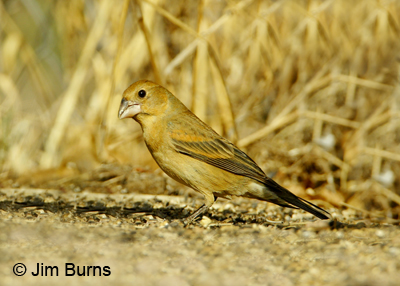
* * * * *
Over the past two decades we have given field guides to perhaps two dozen non-birding relatives, friends, and co-workers whom we thought might become birdwatchers because they evinced some interest in our special interest. Not a single one has become hooked. It’s now a family joke that if we find someone with potential we don’t dare give them a field guide for fear of turning them off. Kenn Kaufman’s latest book, Birds of North America, published by Houghton Mifflin this fall as the first in a new series of “focus guides” may change all that.
Kenn, arguably the best “field birder” in North America before that term had any meaning, became hooked so early in his life he almost never got a life. He has gone on to a career as author, artist, and birding guide. The same ordered and analytical mind which led him to discover and verbalize for us dummies the discernible differences in Empidonax Flycatchers, has dictated a better way to organize and present bird identification for newcomers and confused initiates—groupings of visually similar birds presented in photographs which he has digitally enhanced to best highlight the one or two most salient field marks of each species.
The very first book I ever opened to help me put a name on a bird I had seen was arranged by color. Don’t try to figure out how old that makes me and don’t try to use such a book to identify a female Blue Grosbeak. Kenn has always been about shape and structure and, though an accomplished bird artist, has always been aware of the advantages photographs can offer over drawings.
I love the Pictorial Table of Contents which opens his book. It detours the novice around the potholes and red lights of inexplicable taxonomy, weird common names and incomprehensible scientific names and immediately places the focus on shape and habitat. This leads, via color coding, to family groupings. Pages 7 through 11, the first part of the introduction which Kenn labels Birding Basics, should be a mandatory insert into every box of new binoculars and should probably be reread any time any birder walks out the door.
One of the best features of the book is the short synopses which appear at the top of nearly every left-hand page under the family or group title. Concise and relevant, they give the reader spot-on insights into comparative field marks and behavioral habits, fascinating glimpses into ornithological history, and some of the flavor of Kenn’s droll, accessible literary style, this latter being no mean feat for a field guide.
Another major asset of the book is the paired pages of introductory information about families and groups of birds which are of special interest or notorious difficulty. Gulls, birds of prey, and shorebirds are examples, and there are explanations of plumage variation, migratory patterns, and flight jizz.
One criticism of Birds of North America revolves around the use of photographs and the computer editing of those photographs. My compliments to Kenn for seizing upon new computer technology to blend together the advantages of two media. Yes, these are “doctored” photographs, but Kenn states this right up front, and even the “purest” of art photographers should agree that a basic field guide is a proper venue for computer enhancement. A second criticism is that in this book Kenn hasn’t tapped into his vast knowledge to advance the science of bird identification. This criticism is off the mark since it was never Kenn’s intention with this book to add to his invaluable 1990 Peterson Field Guide, Advanced Birding.
I, too, hope Kenn Kaufman writes many sequels to Advanced Birding, but I’ve already bought two copies of this book. In mine, I’ve found the top-of-the-left-page notes wonderful armchair reading, the comparative bird group sections a handy reference, and the color coding combined with the Peterson style “arrows” a quick and easy way to check and/or refresh my memory on ID details.
The second I gave to a friend with a summer home in Flagstaff. He’s seeing birds there and getting curious. He described a “brightly colored bird” that hung around his property all summer. With some trepidation I tossed him the Kaufman book, cold with no explanation, and told him to put a label on his bird. He hit the Table of Contents, pursed his lips, then started smiling and riffed through the color keys to the end of the “songbirds.” In two minutes flat he told me it was either a grosbeak or an oriole and if he had had this book in the field with him he could have told me for sure. Precisely the point! This book is going to either hook or help everyone but the most jaded experts.
Buy two copies of this book. Use one yourself and give the other to a friend trying to get started. Both of you are going to love it. It’s truly a “hand” book, very compact, fitting easily into an outer pocket. Get the cover laminated. Take it with you every time. Over the next two decades you and your friend are both going to beat it to death.
* * * * *
And now, a decade later, Kenn has finally given us Field Guide to Advance Birding. A review to follow, perhaps in the next column.